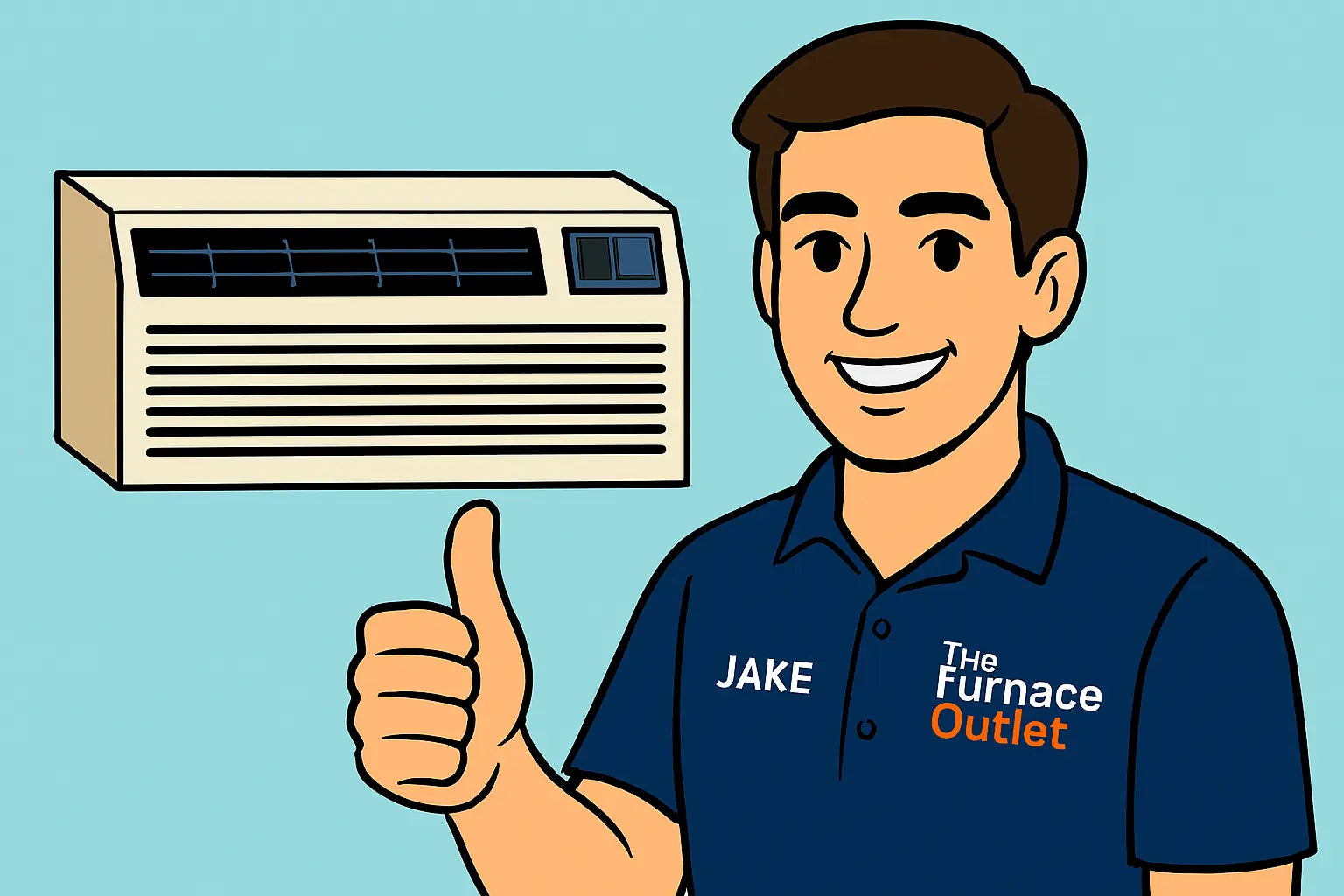Intro from Jake
yo yo, it’s Jake! 😎 If you’re staring at that Amana PTAC wondering where to start, don’t sweat it. I’ve been in the trenches with these units, and I’m here to keep things light, practical, and—dare I say—kinda fun. This blog’s your pit crew manual: we’ll cover prep, install, quick fixes, maintenance hacks, and when it’s time to wave the white flag and call a pro. Grab your tools and let’s roll. 🛠️🔥
Step 1: Pre-Install Prep Like a Pro
Before you jam that PTAC into the wall, let’s talk setup.
-
Kill the power at the breaker—because zapping yourself isn’t the kind of “shock value” we’re aiming for.
-
Measure your wall sleeve space (a snug fit prevents drafts and water issues).
-
Gather your tools: screwdriver, level, drill, tape measure, and a voltage tester.
Pro tip: A sloppy install can waste serious energy and comfort. According to ENERGY STAR’s HVAC installation guide, bad ducting or poor setup can lead to 20–30% energy loss. That’s like throwing cash right out the window.
Step 2: The Installation Flow (Jake Style)
Here’s the order of business:
-
Slide the wall sleeve in level—if it’s crooked, drainage gets funky.
-
Secure it tight—use screws and brackets as per the manufacturer’s diagram.
-
Hook up the proper circuit voltage (double-check your breaker matches the unit’s rating).
-
Slide the PTAC into the sleeve, tighten everything down, and reconnect power.
If you want a visual walk-through, The ACHR News offers a solid PTAC installation breakdown that’s worth bookmarking.
Step 3: Troubleshooting Common PTAC Gremlins
Even the best units sometimes act up. Here’s Jake’s quick-fix roster:
-
Unit won’t power on: Check the breaker, verify the outlet’s live, and reset the master switch.
-
Blowing air but not cooling/heating: Could be clogged filters, blocked coils, or low refrigerant. If refrigerant’s the issue, leave it to a pro—seriously. The folks at HVAC.com’s troubleshooting guide explain why it’s best not to DIY that one.
-
Weird noises: A rattle? That’s usually a loose screw. A squeal? Probably blower motor bearings.
-
Water pooling: Check your condensate drain—gunk builds up faster than you think.
Step 4: Maintenance Moves That Save You Headaches
Let’s keep your PTAC happy year-round.
-
Monthly: clean or replace filters.
-
Quarterly: inspect coils, vacuum vents, and check the drain pan.
-
Annually: tighten screws, inspect wiring, and give the whole thing a once-over.
Maintenance isn’t just about longevity—it’s about efficiency. ENERGY STAR’s Heating & Cooling Guide notes that regular filter cleaning alone can improve airflow and cut down on wasted energy.
Step 5: Knowing When to Call the Pros
Jake’s rule of thumb: if it sparks, leaks refrigerant, or smells like burnt toast, back away and dial up a pro. Not everything’s DIY-worthy. Complex electrical faults or sealed system repairs are where trained techs shine.
Final Thoughts from Jake!
alright folks, that’s a wrap on the PTAC playbook! 🎬 You’ve now got the lowdown on installing, troubleshooting, and keeping that Amana Distinctions running like a champ. Remember, a little maintenance goes a long way—filters, coils, and a good eyeball check now and then will save you headaches later.
And hey, if you’re still shopping or thinking about adding another unit to the mix, do yourself a favor and check out the Amana Distinctions 14,700 BTU PTAC with heat pump and 3.5 kW backup. That’s the exact model I’ve been talking about here, and it’s a beast when it comes to reliability and comfort.
Need more advanced installation tips for this unit? Visit my guide: A Tech's Playbook.
So, keep cool, stay warm, and let your PTAC do the heavy lifting. Jake’s signing off—catch you next time with more tips, tricks, and a few bad jokes. 😎✌️
- Jake out!







